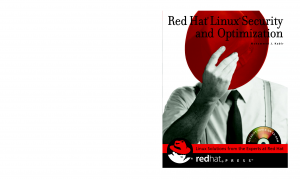
By Gadjo Cardenas Sevilla
Red Hat’s technology powers the Internet infrastructure and has benefited from the open source involvement of its community of users.
Red Hat develops software in collaboration with customers from a range of industries, including government and financial services. The company and its community of developers use this valuable feedback to build rigorous security protocols into the software in a rigorous and ongoing manner.
Red Hat’s unique subscription model gives customers access to a dedicated team of experts who support their products and technology 24×7. This is a powerful benefit, specially for smaller customers and SMB’s that simply don’t have the dedicated in-house staff to keep up on each and every security issue, flaw and fix out there.
Red Hat believes that, ‘open technology and security are tightly connected. Rather than relying on one company or organization to create a secure solution, open technology allows government and the private sector to work together to create their ideal secure environments.’
 This is especially true in scenarios where technology, and the various threats against it, are evolving at a very fast pace.
This is especially true in scenarios where technology, and the various threats against it, are evolving at a very fast pace.
Testing and finding exploits, as well as formulating patches is more successful if there are many hands on deck.
Red Hat’s open source framework allows entire industries to agree on standards and encourage their brightest developers to continually test and improve the code.
More eyes on the code, means better chances of tracking down bugs or potential exploits. The shared information platform that Red Hat has developed allows many users to participate and contribute to making services and products more secure.
“Our support is the only offering keeping Red Hat in business. Our support is our main product,” says Luc Villeneuve, Red Hat country leader and general manager for Canada.
“Clients’ feedback on our quality of service is very high, and client repeat business is equally high at 98 per cent or more.”
One recent example is how the Heartbleed security flaw threatened to expose sensitive online information to would-be hackers. The software that was supposed to protect Internet activity turned out to have a giant hole in it, which could have resulted in potentially unwanted access to email, bank accounts, user names and passwords.
Google researchers and a security firm based in Finland reported the flaw, and even though Heartbleed has been around for more than least two years, a software patch to fix the problem was quickly released days after it was found and verified.

Red Hat’s reputation for security in the back end systems is well rooted. “When we’re dealing with a customer, the longest part of the sales cycle is getting the customer comfortable with the security of the platform in the cloud. When we say Red Hat, it clicks with the customer and shuts off half of their security questions,” says Mitch Nelson, Adobe Systems director of managed services for enterprise.



